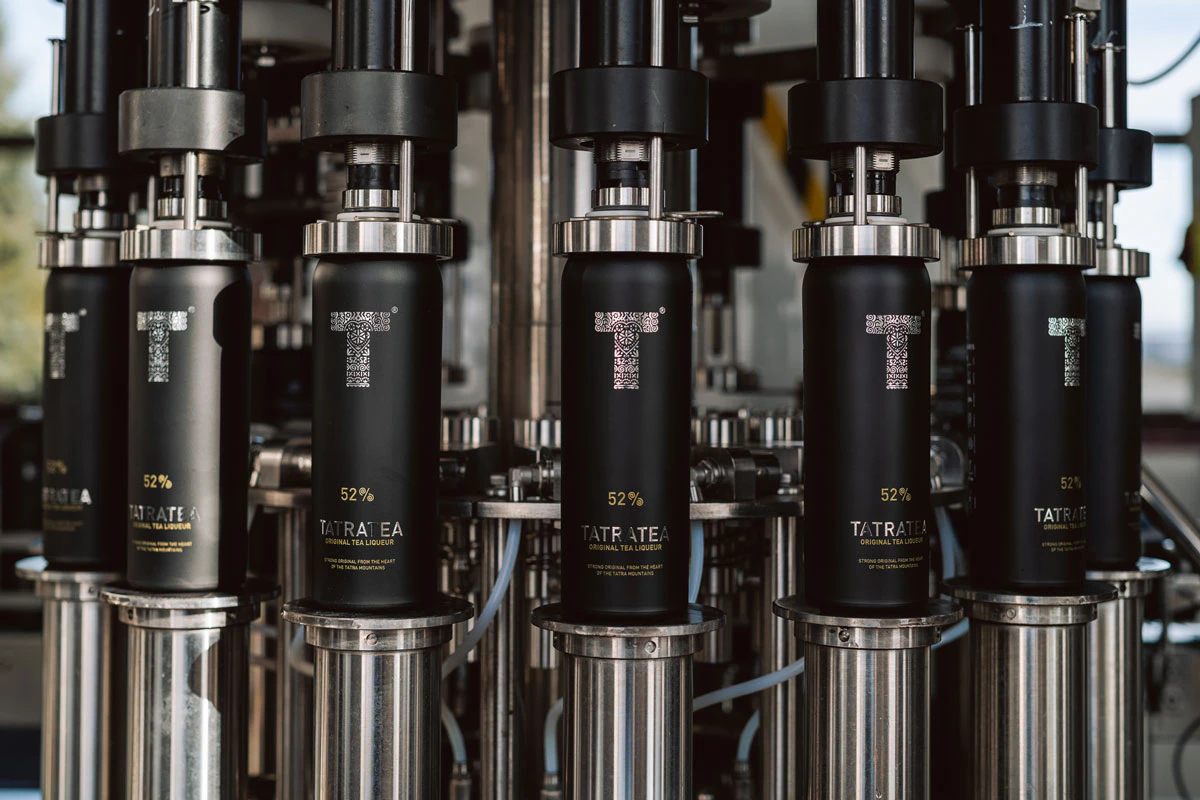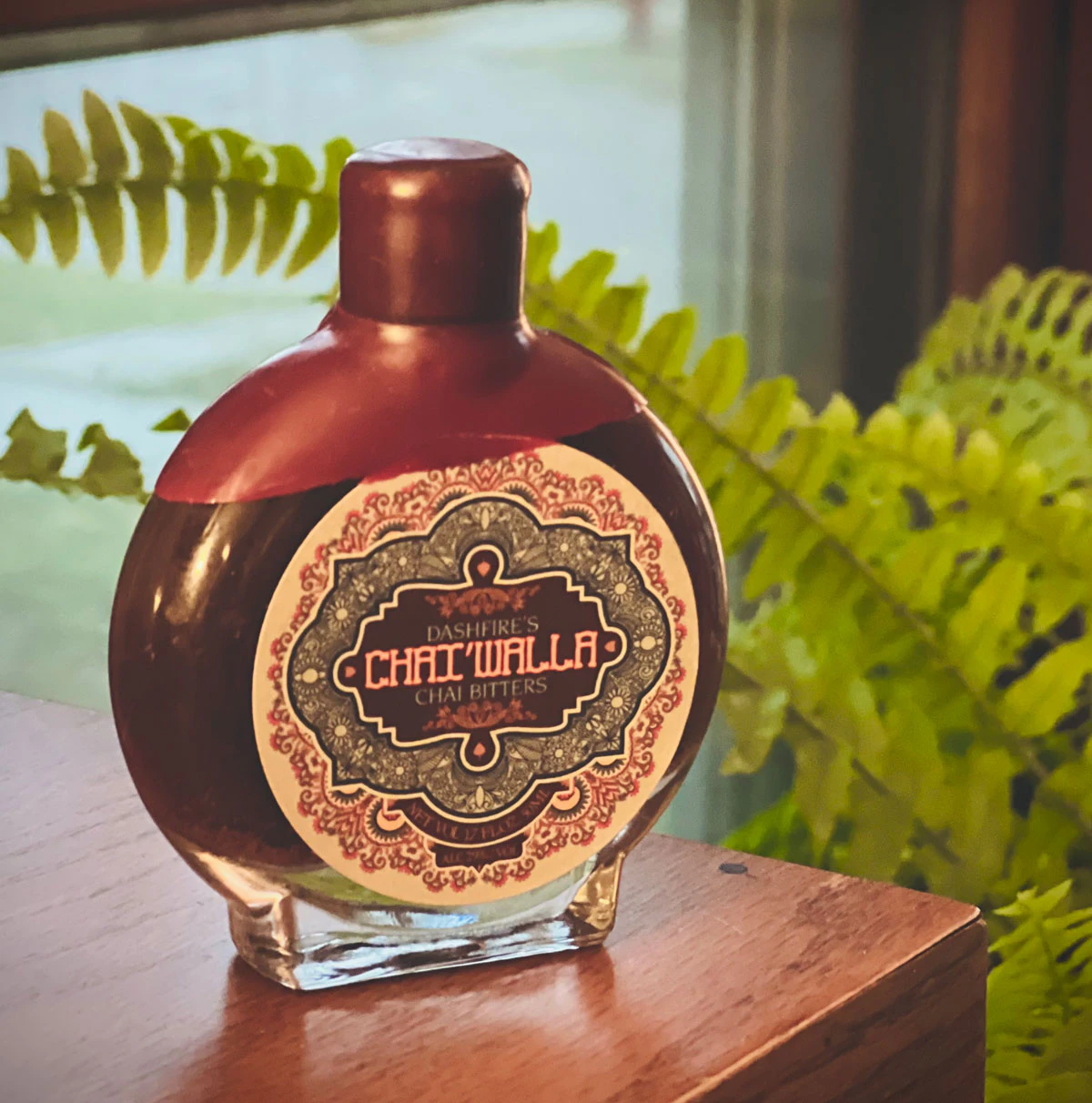Tea is the world’s second most consumed beverage after water. It’s a vital staple in so many cultures and a centerpiece of traditions. With its many varieties and plethora of botanicals and spices, tea is a powerful flavor source that can set spirits apart with aromatic nuances and cultural ties.
Add it to a cocktail, and you’ve unlocked new levels of flavor complexity—not to mention sensory elements such as tannins, creaminess, and smokiness. You’ve also tapped into different cultures, building exotic flavor profiles that evoke China, India, or Africa.
That access to unique flavors and cultural connections only grows when tea meets a spirit or liqueur, whether enjoyed in mixed drinks or straight. To distill or infuse with tea can feel both obvious—one tea can fulfill the roles of multiple botanicals in a gin—as well as innovative. Consider the endless possibilities, and the fact that shelves are not exactly overflowing with tea-centric spirits.
Many distillers are using tea to augment their liqueurs and bitters. Here, we focus on two of them—but before diving into those distillers and their products, let’s look at the primary tea types.
Reading the Tea Leaves
Nearly all tea comes from the shrub Camellia sinensis, native to a stretch of land running from India into China. The distinctions among types represent the plant varieties as well as how the leaves are grown and then processed.
There are six main types—black, green, oolong, white, pu-erh (puer), and herbal. Each includes many varieties that boast rich bouquets of floral, herbal, fruity, and spicy aromas and flavors.
- Black tea leaves are allowed to fully oxidize before they are dried. This gives it richer, stronger flavors and a fuller body, with notes of malt, fruit, and chocolate, all balanced by tannins.
- Green tea is the opposite. It is not allowed to oxidize before being dried, so it’s much greener and fresher; light yet intensely aromatic with notes of grass, sweet vegetables such as snap peas, and nuts.
- Oolong tea is somewhere in between, painstakingly oxidized, rolled, dried, and roasted to different degrees for different kinds. The varying levels of oxidation balance green tea’s fresh earthiness with black tea’s creaminess, and you’ll find notes from delicate flowers to nuts and caramel depending on the type.
- White tea is less processed than others and oxidized just a bit. It’s the most delicate category of teas—light, fresh, and floral.
- Pu-erh tea is aged and fermented tea, a process applied to specific varieties of oolong, black, and white teas that will yield a robust body along with woody, earthy, floral qualities.
- Herbal tea is the outlier; it doesn’t come from Camellia sinensis but rather from whatever plant it’s named for. Think chamomile, chrysanthemum, mint, and rose-hip tea.

Photo courtesy Tatra Distillery
A Range of Slovakian Mountain Liqueurs with Tea
Tatra Distillery, in Slovakia’s Tatra Mountains, calls on the local tradition of drinking tea with alcohol and herbs for warmth and strength, says Tatra’s marketing specialist Kristína Horná. Tea captures that experience best with its varying complex, herbal profiles. Tatra works with Assam black tea, green tea, and white tea, along with a mix of locally sourced herbs and Slovakian oak.
“These three [teas] are macerated separately in cold alcohol for six to eight weeks, then blended together and left to age in oak barrels for another six to eight weeks,” Horná says, explaining that a long, cold soak is key to avoiding the bitterness that can come from heat meeting tea. “Tea is very sensitive. Its flavor can change significantly depending on time, temperature, or alcohol concentration. Cold maceration gives us more control and helps preserve the authentic aroma of the tea leaves.”
The alcohol Tatra uses is a high-quality neutral spirit made from sugar beets, produced in Kojetín, Czech Republic. “This creates the base Tatratea concentrate, which we then use in different proportions depending on the variant’s alcohol strength and flavor.” Black tea brings depth and fullness, she adds, while green-tea macerate is fresh and slightly bitter, and white tea brings balance for sweeter flavors, key in Tatratea varieties such as 22 percent ABV Coconut. Tatratea’s flagship is Original at 52 percent ABV, which anchors a lineup of 15 different expressions such as the berry-forward Forest Fruit at 62 percent ABV, the 35 percent Herbal Digestif, and the 42 percent Peach.
Sugar beets also come into play for sweetening Tatratea liqueurs, as the brand uses natural beet sugar. “This helps soften the liqueur while letting the natural sweetness of the tea and herbs shine through without overpowering them,” Horná says. The liqueurs are filtered between the maceration and oak-barrel maturation period, which Horná says is where the flavors meld together. Any final flavor elements such as fruits are then added and the mixture rests again for another six to eight weeks in stainless-steel tanks. Horná says that the alcohol acts as an amplifier, extracting flavors and aromas you might not notice otherwise.

Photo courtesy Dashfire.
A South Asian Favorite Flavors American Bitters
From Slovakian tea traditions to those of India and Sri Lanka: In Minneapolis, Chai’Walla bitters is a unique member of Dashfire’s eclectic portfolio. It was inspired by confounder Lee Egbert’s time in India and Sri Lanka while he was living and volunteering in Calcutta.
“I would have my chai tea every morning, and as I traveled around the country, I saw the different spice profiles and tea styles,” he says. “I had a personal love of chai when I came back [to the United States] and started Dashfire. … [We] created the Vagabond Collection for bitters that specifically revolve around our love of traveling and living abroad.”
Egbert explains that different teas are used for chai—green teas are more common in the north of India, black teas in the south. Egbert and Dawn, his wife and Dashfire cofounder, feel the “quintessential chai flavor profile” comes more from the black Assam tea, which they source from India. They macerate the tea at room temperature in alcohol instead of water, which gives it more of a tannic quality; Egbert says this is how chai on the streets of India tastes because it’s often been steeped multiple times. This alcohol is a neutral grain spirit from corn.
The tea macerates for just one day, but other ingredients to build up the chai profile for the bitters can take three to four weeks. They add ginger juice, cardamom, cinnamon, clove, and black pepper, all geared toward translating the authentic chai experience into their bitters. Chai’Walla offers an engaging point of connection because of how familiar people in the United Sates are with chai, even just from their local coffee shops. Egbert says consumers understand its spices and to what cocktails they’d want to apply them—it works especially well with barrel-aged spirits and in cocktails such as the old fashioned and hot toddy. People can even add it to their preferred milk and sugar to re-create a chai experience at home.
Cocktails incorporating tea have been trending for the past few years, and it’s a wonder this hasn’t always been the case. Many cultures and regions already have a tea tradition, so distilling with tea allows them to interact with spirits in more diverse ways and approach these spirits with a pre-existing knowledge of flavor profiles. Add to that the cultural storytelling, and you can understand the growing popularity of tea in the beverage-alcohol space.
